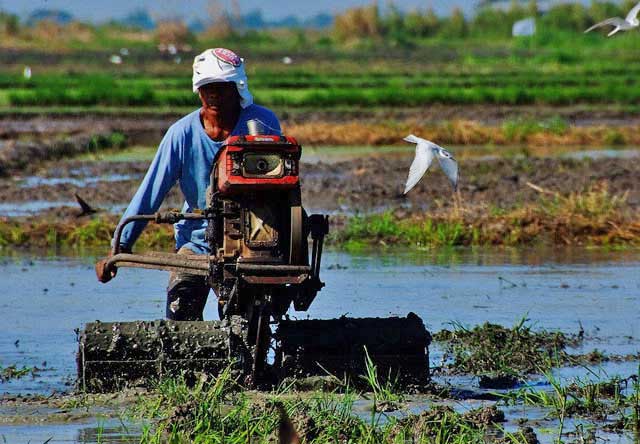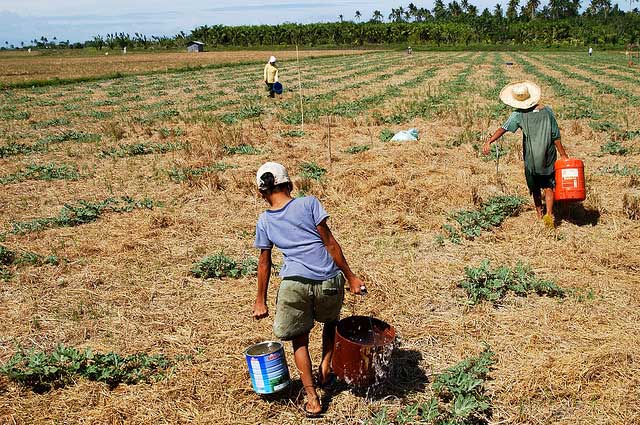How to prepare the rice field for planting
 Land preparation is important to ensure that the rice field is ready for planting. A well-prepared field controls weeds, recycles plant nutrients, and provides a soft soil mass for transplanting and a suitable soil surface for direct seeding.
Land preparation is important to ensure that the rice field is ready for planting. A well-prepared field controls weeds, recycles plant nutrients, and provides a soft soil mass for transplanting and a suitable soil surface for direct seeding.
Land preparation covers a wide range of practices from zero-tillage or minimum tillage which minimizes soil disturbance through to a totally 'puddled' soil which actually destroys soil structure.
It typically involves (1) plowing to "till" or dig-up, mix, and overturn the soil; (2) harrowing to break the soil clods into smaller mass and incorporate plant residue, and (3) leveling the field.
Initial land preparation begins after your last harvest or during fallow period. This is important for effective weed control and for enriching the soil. Generally, it will take 3−4 weeks to prepare the field before planting.
Clear the field
- At dry field condition, apply glyphosate to kill weeds and for better field hygiene.
- Irrigate the field 2−3 days after glyphosate application.
- Maintain standing water at 2−3 cm level for about 3−7 days or until it is soft enough and suitable for an equipment to be used.
- Plow or rotovate the field to incorporate stubbles and hasten decomposition.
Implements: Power tiller with attached moldboard plow, Hydrotiller, Rotovator
- Flood the field. Keep it submerged for at least two weeks. Let the water drain naturally to allow volunteer seeds and weed seeds to germinate.
Depending on weed population and soil condition, another tillage operation can be done.
Create compost from rice residues
 Composting converts crop residues into better organic fertilizers. To create a compost:
Composting converts crop residues into better organic fertilizers. To create a compost:
- Ensure that the field is level, well drained, and under shade.
- Chop compost materials into small pieces (3−5 cm).
- If possible, build compost heaps in layers consisting of rice crop material, combined with legume or manure wastes, on a 2:1 ratio.
- Keep compost heaps moist—not to wet and not too dry. Make sure that no water drains from the compost pile. If rice straw cracks when bent, then the compost must be too dry.
- Sprinkle compost heap with decaying material (e.g., cow urine), a dilute solution of N fertilizer such as urea, and/or with a micro-organism solution (e.g., tricho). This will decompose the materials faster.
- Mix and turn the heaps every two weeks.
- Compost should be ready within 4−8 weeks if moisture and temperature conditions are good.
Plant cover crops
 Growing cover crops help suppress weeds and enrich the soil.
Growing cover crops help suppress weeds and enrich the soil.
Crops that can be planted after harvest include nitrogen fixing crops like Sesbania, Azolla, and other legumes such as mung bean and cow pea.
Different rice ecosystems have different land preparation requirements. Lowland rice fields, for example, are usually puddled to develop a hard pan and reduce water loss. Upland ricefields, on the other hand, do not necessarily have to be puddled. In resource-limiting environments, dry preparation can be adapted.


